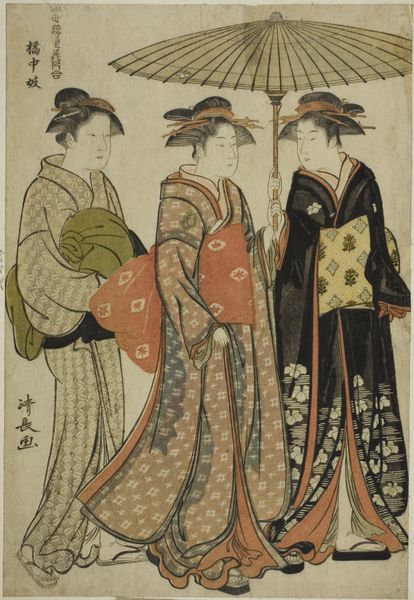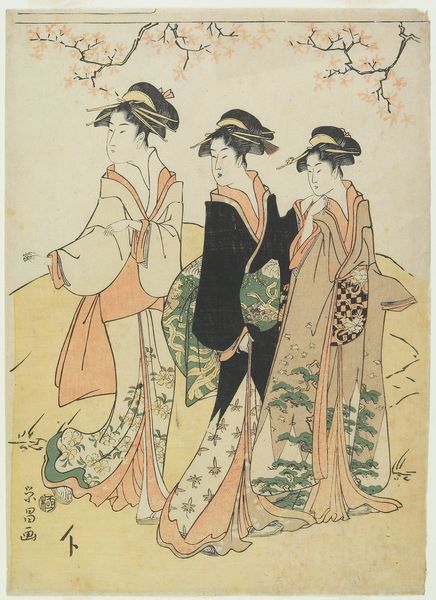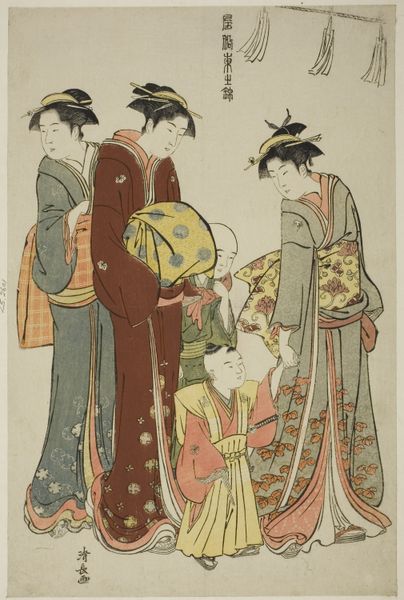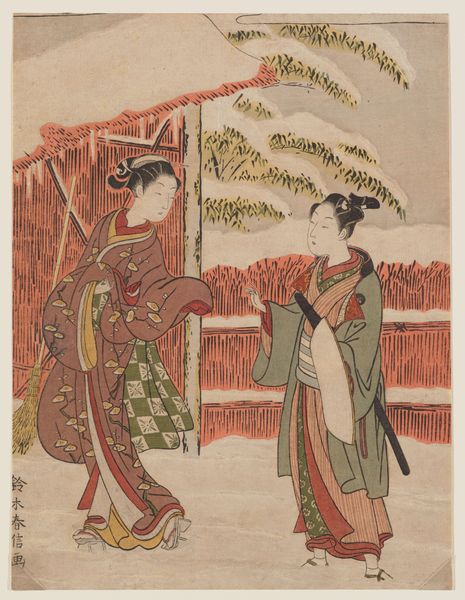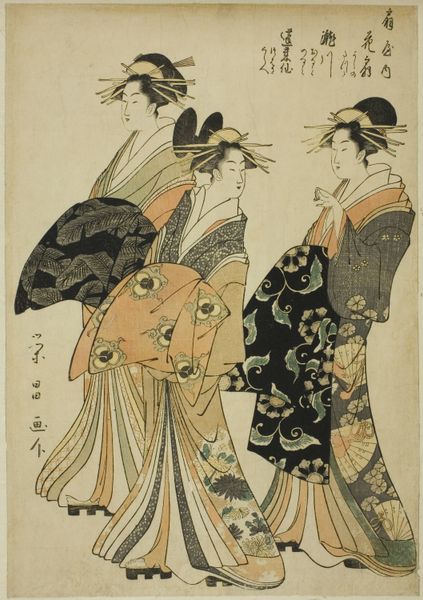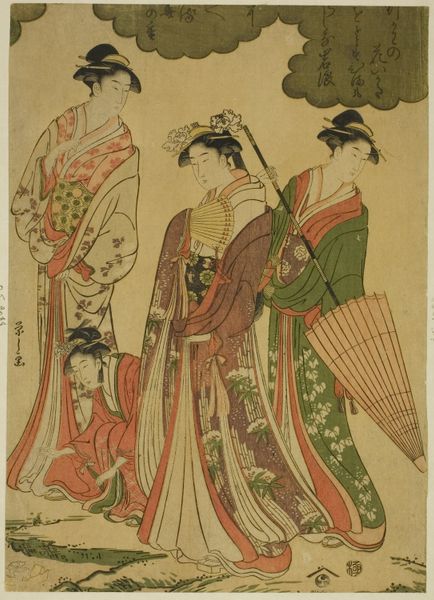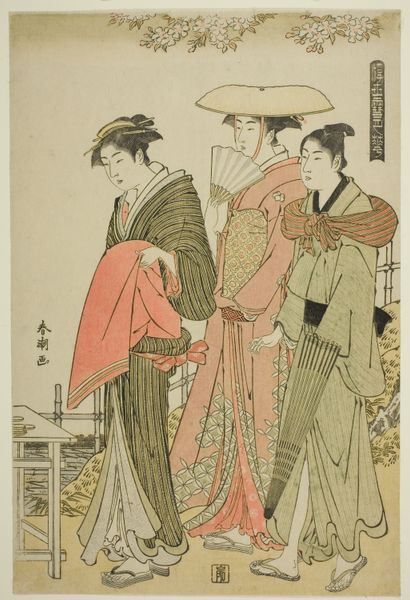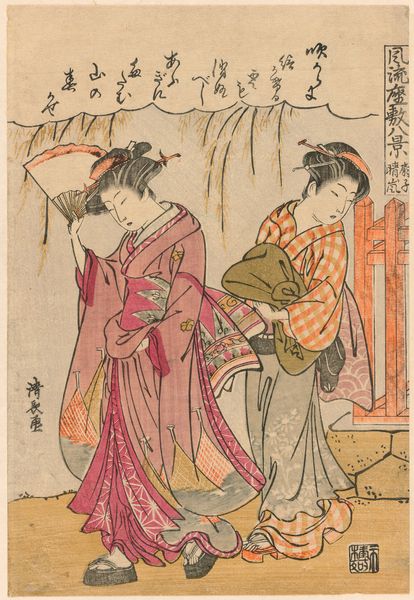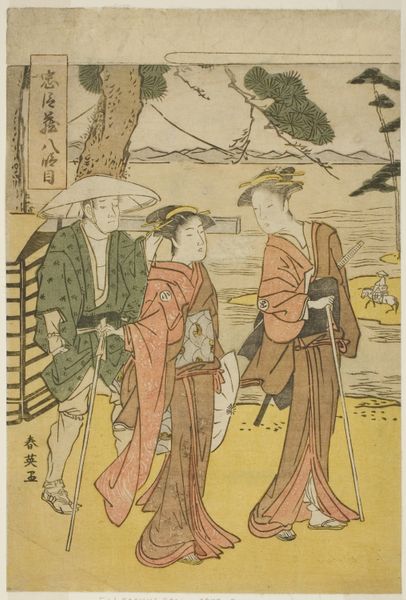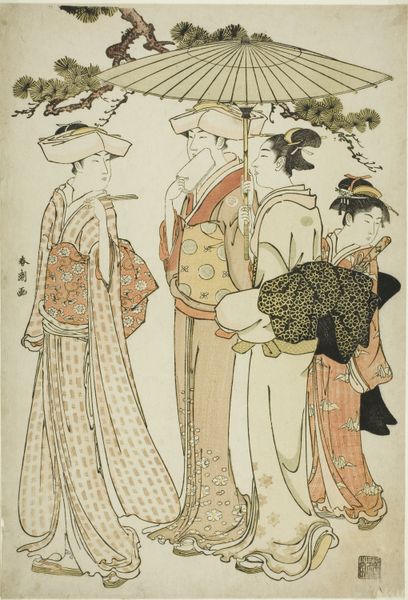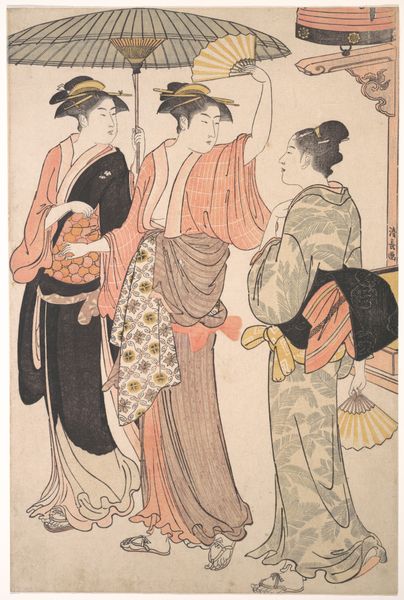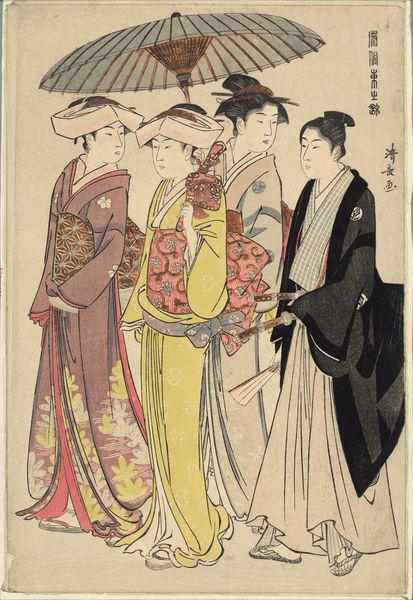
Spring Outing, from the series "A Collection of Contemporary Beauties of the Pleasure Quarters (Tosei yuri bijin awase)" c. 1783
0:00
0:00
print, ink, woodblock-print
#
ink painting
# print
#
asian-art
#
ukiyo-e
#
figuration
#
ink
#
woodblock-print
#
genre-painting
Dimensions: 37.9 × 25.3 cm
Copyright: Public Domain
Curator: Let’s discuss Torii Kiyonaga’s woodblock print, "Spring Outing, from the series 'A Collection of Contemporary Beauties of the Pleasure Quarters,'" created around 1783. It depicts three elegantly dressed women strolling beneath cherry blossoms. Editor: Immediately, the sense of serenity and grace strikes me. There's an almost dreamlike quality to the delicate color palette and the figures' elongated forms. It feels… curated. Curator: The women in the print were known to be models Kiyonaga would use to explore the theme of ideal beauty through figure painting. The figures aren't rendered individually, as such their individual importance gets subsumed into that of an "ideal." Consider the social role the models might have been assigned to at the time of production. Editor: That’s interesting! Their kimonos must've required extensive labor and materials. Look at the intricate patterns. Woodblock prints in general seem deceptively simple but speak of a painstaking carving process, the skilled layering of ink, the specific absorbency of the paper... Who were these made for? Were these luxury goods consumed only by the wealthy? Curator: Ukiyo-e prints had a wide distribution in Edo-period Japan. They offered a snapshot of popular culture—beauties, actors, landscapes—making them accessible to a wider audience. This also served as a commentary on fleeting beauty and changing trends. The presence of cherry blossoms underscores this theme. Editor: Thinking about it as a product makes the consumption more tangible, too, these are carefully fashioned pieces with planned obsolescence. It feels like we are able to enter a historical and material moment and glimpse at consumer appetite at the time through these aesthetic considerations. The ink seems so crucial to defining both line and form, do we know how it would have been processed? Curator: We can deduce from historical recipes the meticulous labor of the printers that contributed to making the production of the prints affordable, even as Kiyonaga made a claim to "art." Understanding these tensions informs the images so well. Editor: So much can be discovered through the close consideration of materials, techniques, and the society that brought them to life! Curator: Indeed, this print functions as a cultural time capsule! It reveals to us something about desires, gender, and the cultural memory we attach to our visions of ideal beauty.
Comments
No comments
Be the first to comment and join the conversation on the ultimate creative platform.
